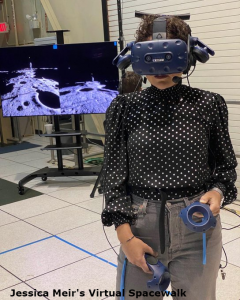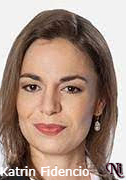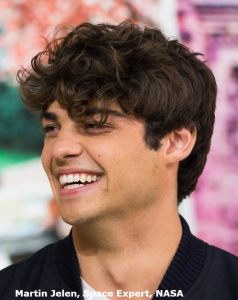Katrin Fidencio, San Diego, USA
**The Future we had imagined is becoming reality**

Sitting in the window-filled dome of the International Space Station, watching out at the Earth’s bended skyline and afterward down at the unthinkable rug of the planet looking by, causes me to feel like I’m in space. Yet, I’m not. I’m watching the 360-degree VR (Virtual Reality) narrative, Space Explorers, on the Oculus Quest.
The VR spacewalk:
The VR narrative has been gathering film for over two years, recording north of 200 hours of Expeditions 58-62 and SpaceX Crew 1 on board the ISS.
A changed variant of the camera will work outside the space station for what ought to be a five-day shoot not long from now, when the camera will be mounted on the ISS’ outer Canadarm2 robot arm. “That will be whenever that Earth first gets recorded in ultra-superior quality video in an entire 360 climate unhindered by anything” Martin Jelen says. “What’s more, that will finish with a six-and-a-half-hour spacewalk that we will film with two space explorers from the second they emerge from the station until the second they get back in.”
 Jessica Meir uses VR:
Jessica Meir uses VR:
She tweets that “Obviously, no lunar side trip is finished without a spacewalk – time to test some regolith – it’s science time (in VR for the present)!
The faint lighting at the South Pole will make surface activities significantly more trying for missions”.
Meir’s Experience:
My experience visiting the ISS through a VR narrative made me puzzle over whether this kind of involvement might at any point occur continuously, and on the off chance that that could empower space explorers to be there through telepresence.
“That is something that NASA has contemplated also previously, especially concerning telemedicine,” Meir says. “We have a ton of tests that utilize ultrasound, for instance. I was engaged with one of those where I had a group of clinical specialists and researchers that were from one side of the world to the other, and they were really directing me, they had the ongoing picture of my ultrasound as I was tuning it and could assist with directing me to get the test that they required. With computer generated reality, they could have significantly to a greater extent a presence and, maybe, could make it much more straightforward.”
End text.
# Our contact email address is: editor.telegraphnepal@gmail.com
